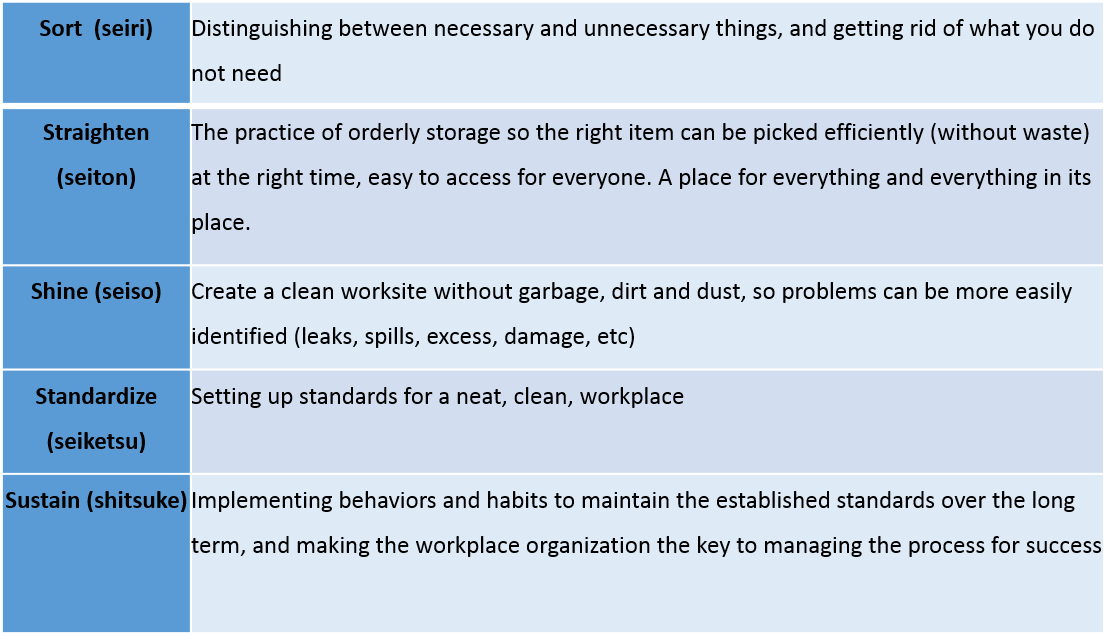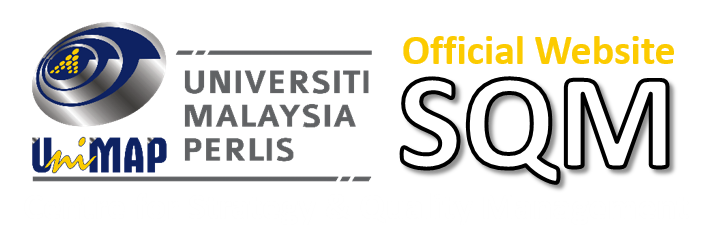FAQ
The implementation follows a circular: PEKELILING TRANSFORMASI PERKHIDMATAN AWAM BIL 1 2018 issued by Unit Pemodenan Tadbiran dan Perancangan Pengurusan Malaysia (MAMPU). ISO, short for International Organisation for Standardization, sets out the criteria for a quality management system. It can be used by any organization regardless of its field of activity. In fact, by implementing ISO standards for QMS, UniMAP joins over one million companies and organizations in over 170 countries certified to ISO 9001.
2. What Does QMS Refer To?
A quality management system (QMS) is defined as a formalized system that documents processes, procedures, and responsibilities for achieving quality policies and objectives. A QMS helps coordinate and direct an organization’s activities to meet customer and regulatory requirements and improve its effectiveness and efficiency on a continuous basis. ISO 9001:2015, the international standard specifying requirements for quality management systems, is the most prominent approach to quality management systems.
(from https://asq.org/quality-resources/quality-management-system)
3. How Does ISO Implementation Benefit UniMAP ?
a) Improvement of UniMAP’s credibility and image, as the QMS used is of internationally recognised standard;
b) Improvement of customer satisfaction since this is one of the quality management principles in ISO 9001, by planning for and striving to meet customer requirements;
c) Better process integration, which will lead to work efficiency and cost savings;
d) Improve evidence for decision making – as the need to use evidence for decision making process is a principle in ISO9001, it is hoped that that the decision made will improve efficiencies and increase cost savings. In addition, through proper monitoring of the process being improved, we will be able to see how much improvement has happened based on the evidence.
e) Create a continual improvement culture which will benefit UniMAP in the long run; and
f) Engagement of UniMAP’s staff, which will lead to happier staff and a stronger UniMAP!
4. What Is The Scope Of Certification For MS ISO 9001:2015 At UniMAP?
Provision of Higher Education Services for Undergraduate Level (Honours)
5. What Are That Processes Involved Within The Scope?
A total of 28 operational procedures and 15 supporting procedures are involved in the certification scope.
6. How Can One Obtain Access To UniMAP ISO Procedures?
Please go to https://eqdoc.unimap.edu.my under Senarai Dokumen Terbitan.
Access password can be obtained by contacting En Hidham 04-9798645.
In addition to the procedures, many other information on QMS can be obtained from the eqdoc website.
Innovative and creative group (ICC) is a formation of a group of worker who sit together to investigate, analyse, and find the way to solve the problems regarding their work using ICC tools and problem solving process. From the process of ICC, every single worker gets a change to contribute ideas and opinions to their group as well as their organisation. They also will get satisfaction in daily work and other benefits such as increasing their productivity and quality of work. The PDCA (Plan, Do, Check, Action) cycle is utilised in implementing any ICC projects which will ensure the project to be successfully completed.
The problem identification can be properly explained by using the 5W 1H (What, When, Why, Who and Where, How) approach. Several ICC tools will be applied during the implementation of ICC projects and the new 7 QC tool and technique is the common ICC tool used by the ICC team.
(from https://www.mpc.gov.my/innovative-and-creative-circle-icc/)
2.Why is ICC implemented?
ICC has been practiced in Malaysia for more than two decades and is now part of excellence workplace culture. An ICC activity implies the development of skills, capabilities, confidence and creativity of the people through cumulative process of education, training, work experience and participation which will sustain the motivation and commitment towards.
(from https://www.mpc.gov.my/innovative-and-creative-circle-icc/)
5S represents Japanese words that describe the steps of a workplace organization process. Incidentally, lexical items with the same meanings in Malay and English also begin with the letter “s”, thus making reference to the methodology in the languages that much easier.

In simple terms, the five S methodology helps a workplace remove items that are no longer needed (sort), organize the items to optimize efficiency and flow (straighten), clean the area in order to more easily identify problems (shine), implement color coding and labels to stay consistent with other areas (standardize) and develop behaviors that keep the workplace organized over the long term (sustain). (taken from https://leansixsigmadefinition.com/glossary/5s/)
2.What does 5S represent?

(taken from https://leansixsigmadefinition.com/glossary/5s/)
3.Why 5S?
The methodology and principles of 5S establish a foundation for continuous improvement that may be built on. Staff will become more involved in the organization as they gain more responsibility. They will tend to acquire a sense of ownership in their work. The improvements in morale, quality, and productivity will lead to increased gains for the organization. In addition, safety at the workplace improves. Every aspect of the everyday work benefits as a result of the implementation of the principles.
(Adapted from https://www.thinkperform.com.au/what-is-5s-why-do-companies-need-it/)
UniMAP 2025 is the university’s strategic plan, comprising three strategic goals and four enablers. It includes a response to IR4.0, as well as incorporating the university’s development plan within the bigger scope of development of the state, industries and the community. It is the university’s proactive approach to ensure that UniMAP remains relevant in the context of national development and growth. The strategic plan comprises several strategic objectives and key performance indicators, against which initiatives and action plas have been designed and will be implemented. UniMAP 2025 is a continuity from UniMAP 2016-2020 Strategic Plan.
2. Why 2025?
UniMAP 2025 has as its basis, and is built upon, the Malaysia Education Blueprint (Higher Education) 2015-2025, key national policies, requirements of university excellence criteria, as well as core quality imperatives of public universities in Malaysia. Our timeline for the implementation of UniMAP2025 concurs with that of MEB (HE) 2015-2025.
3. How was UniMAP 2025 developed?
UniMAP 2025 was developed based on numerous discussion sessions, considering the unievrsity’s niche and vision, and taking into account of both national and global developments.
4. What is the focus of UniMAP 2025?
At the core of UniMAP 2025 are seven clusters made up of three Strategic Goals and four Enablers. The three strategic goals are outcome-based in nature: Innovation-led Teaching, Translational Research and Industry-Ready Graduates. Enablers are four, namely Wealth Creation, Talent Development, Infrastructure and Infostructure. These act as critical success factors to UniMAP 2025, which will enable the achievement of initiatives under the three strategic goals. For each cluster, clear strategic objectives, key performance indicators and targets are realistically set. In total, there are 25 strategic objectives which have to be met.
5. Who is involved in the implementation of UniMAP 2025?
The success of UniMAP 2025 requires all members of UniMAP to work collectively and collegially, in a democratic manner. It requires cross-communication between departments and units, as many initiatives involve more than one entity at the university.
6. How is UniMAP 2025 monitored?
A real-time monitoring system - ePIC (electronic Performance Indicator Channel) – has been developed at PUSPEK to monitor both the target achievements as well as the progress of actions and initiatives. The achievements are closely scrutinized every quarterly. Reporting of progress and achievements will be made by Cluster Leaders/Secretaries through two meetings: UniMAP 2025 Technical Committee, which is chaired by the Assistant Vice-Chancellor (PUSPEK), and UniMAP 2025 Steering Committee, chaired by the Vice-Chancellor.
Information technology (IT) is the use of computers to store, retrieve, transmit, and manipulate data, or information, often in the context of a business or other enterprise. IT is considered to be a subset of information and communications technology (ICT). An information technology system (IT system) is generally an information system, a communications system or, more specifically speaking, a computer system – including all hardware, software and peripheral equipment – operated by a limited group of users.
(from https://en.wikipedia.org/wiki/Information_technology)
2.What is IR 4.0?
Industry 4.0 is a name given to the current trend of automation and data exchange in manufacturing technologies. It includes cyber-physical systems, the Internet of things, cloud computing and cognitive computing. Industry 4.0 is commonly referred to as the fourth industrial revolution.
(from https://en.wikipedia.org/wiki/Industry_4.0)
3.What is Big Data?
Big data refers to data sets that are too large or complex for traditional data-processing application software to adequately deal with. Data with many cases (rows) offer greater statistical power, while data with higher complexity (more attributes or columns) may lead to a higher false discovery rate. Big data challenges include capturing data, data storage, data analysis, search, sharing, transfer, visualization, querying, updating, information privacy and data source. Big data was originally associated with three key concepts: volume, variety, and velocity. Other concepts later attributed with big data are veracity (i.e., how much noise is in the data) and value.
(from https://en.wikipedia.org/wiki/Big_data)
4.How is information technology utilized at PUSPEK?
In carrying out its responsibilities, and within its scope of work, PUSPEK develops web-based systems, online surveys, manages its website and interacts with various external systems. ePIC is an example of a system heavily utilized for the purpose of monitoring the progress of the university’s strategic plan. Another system that is actively used is eQDoc – a system that manages IS09001: 2015 documents as well as the implementation of the quality management system at the university.
5.How can I get access to ISO 9001:2015 procedures for reference?
ISO 9001:2015 documents can be accesses via https://eqdoc.unimap.edu.my
1. UNIVERSITY RISK MANAGEMENT DIVISION (URMD)
University Risk Management Division (URMD) acts as the secretariat for the University Risk Management Committee (URMC). In addition, URMD provides support services for the implementation of risk management in ensuring the acceptance of the implementation of this framework throughout the University such as ensuring that briefings to the responsible parties. URMD is also responsible for developing risk, monitoring and reporting systems for the implementation of the University's risk management. This process is assisted by Departmental Risk Officers as well as the secretariat for risk management at the University level.
2. The objectives of risk management are to:
- Identify and manage existing risks and new risks in a planned and structured manner, with minimal costs and interruptions.
- Develop a culture of risk awareness among staff.
- To increase customers, stakeholders, satisfaction level and trust towards UniMAP
- To create a safe and conducive environment for the University to carry out its operations as planned.
3. Risk Management Committee:
- University Risk Management Committee
- Cluster Risk Management Committee
- Risk Management Coordination Committee
- PTj Risk Management Working Committee
Risk categories:
i) Strategic Risks
Risks that prevent the achievement of the University/PTj's directions and objectives.
ii) Financial Risks
Risks related to the capabilities, management and financial security as well as other financial related aspects.
iii) Legal Risk
Risks relating to legal implications, delegation of powers and other aspects relating to legislation.
iv) Risk Operations
Risks involving all work processes to achieve organizational objectives such as service-related processes, employee safety, human resources, information security, technology usage etc.
v) Risk of Reputation
Risk that will implicate the university's image and reputation.
i) MQA
ii) EAC
iii) ETAC
iv) TTAC
